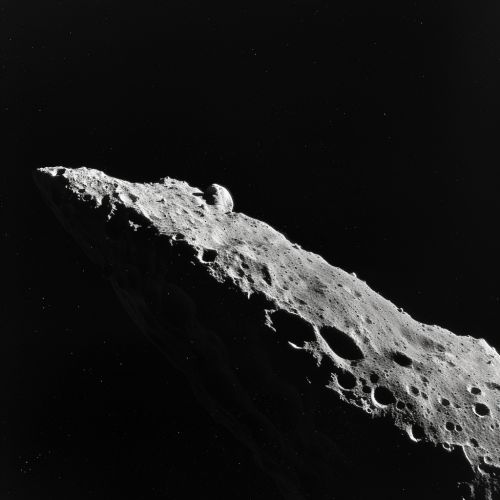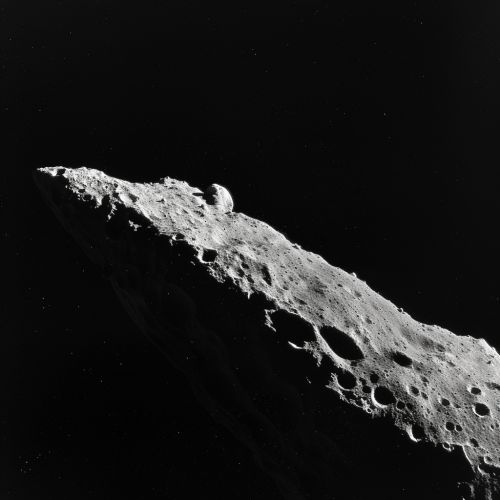9969 Braille
Overview
9969 Braille is a main-belt asteroid discovered on November 27, 1992, by the Spacewatch program at Kitt Peak National Observatory. The asteroid is named after Louis Braille, the inventor of the Braille system of reading and writing for the visually impaired. This article delves into the discovery, physical characteristics, orbital parameters, and significance of 9969 Braille.
Discovery
The asteroid 9969 Braille was discovered by the Spacewatch program, which is an astronomical survey that aims to identify and track near-Earth objects (NEOs). The discovery was made using a 0.9-meter telescope located at Kitt Peak National Observatory in Arizona, USA. The program, initiated in 1980, has been instrumental in identifying numerous asteroids and comets, contributing significantly to our understanding of the solar system.
Naming and Designation
The asteroid was named in honor of Louis Braille, who developed the Braille system in 1824. The Braille system uses raised dots to represent letters and numbers, enabling visually impaired individuals to read and write. The designation "9969" follows the standard naming convention for asteroids, indicating its sequential discovery order.
Physical Characteristics
9969 Braille is classified as an S-type asteroid, which means it is composed primarily of silicate minerals and nickel-iron. S-type asteroids are known for their relatively high albedo, or reflectivity, which ranges between 0.10 and 0.22. The asteroid has an estimated diameter of approximately 2 kilometers.
Surface Composition
Spectroscopic analysis of 9969 Braille reveals a surface composition rich in silicate minerals, such as olivine and pyroxene. These minerals are common in the inner asteroid belt and are indicative of the asteroid's formation history. The presence of these minerals suggests that 9969 Braille may have undergone significant thermal metamorphism, altering its original composition.
Rotation and Shape
Observations indicate that 9969 Braille has an irregular shape, which is typical for asteroids of its size. The asteroid's rotation period is approximately 4.5 hours, as determined by light curve analysis. The irregular shape and rapid rotation suggest that 9969 Braille may have experienced collisions and fragmentation events in its past.
Orbital Parameters
9969 Braille orbits the Sun at an average distance of 2.2 astronomical units (AU), placing it within the inner region of the main asteroid belt. The asteroid's orbit is moderately eccentric, with an eccentricity of 0.15, and it has an inclination of 3.5 degrees relative to the ecliptic plane.
Orbital Elements
The following are the key orbital elements of 9969 Braille:
- Semi-major axis: 2.2 AU
- Eccentricity: 0.15
- Inclination: 3.5 degrees
- Orbital period: 3.27 years
- Perihelion distance: 1.87 AU
- Aphelion distance: 2.53 AU
These parameters indicate that 9969 Braille has a relatively stable orbit within the main asteroid belt, with no significant perturbations expected from planetary encounters.
Exploration and Observation
9969 Braille has been the subject of various observational campaigns, primarily using ground-based telescopes. The asteroid's relatively small size and distance from Earth make it a challenging target for detailed study. However, advancements in observational technology have allowed astronomers to gather valuable data on its physical and orbital characteristics.
Space Missions
While no dedicated space missions have been sent to 9969 Braille, it has been observed by instruments aboard various space telescopes. These observations have provided additional insights into the asteroid's composition and rotational properties.
Significance
The study of 9969 Braille contributes to our broader understanding of S-type asteroids and the processes that shape their evolution. By examining the physical and orbital characteristics of such asteroids, scientists can infer the conditions present in the early solar system and the mechanisms that led to the formation of planetary bodies.
Implications for Planetary Defense
Understanding the properties of asteroids like 9969 Braille is also crucial for planetary defense initiatives. By characterizing the composition, structure, and behavior of potentially hazardous asteroids, researchers can develop more effective strategies for mitigating the threat of asteroid impacts on Earth.
See Also


